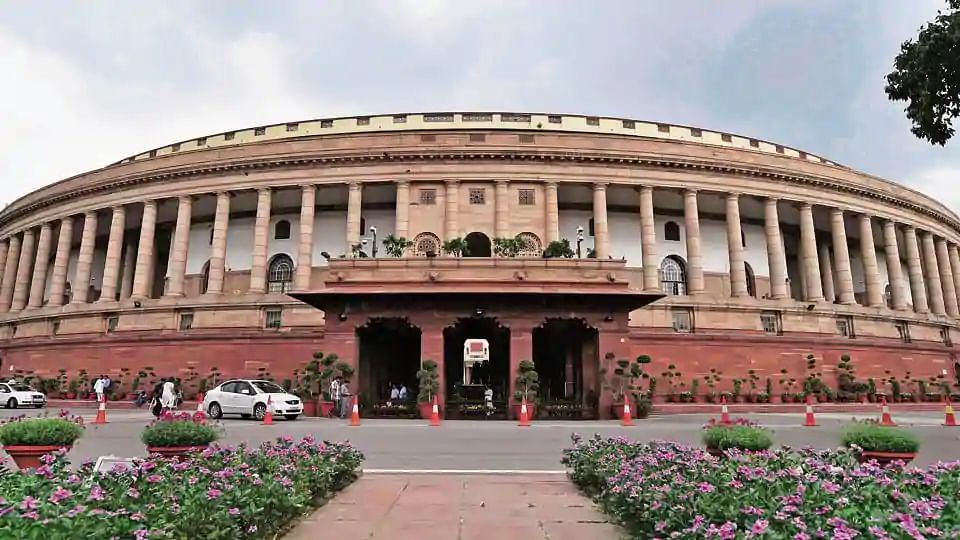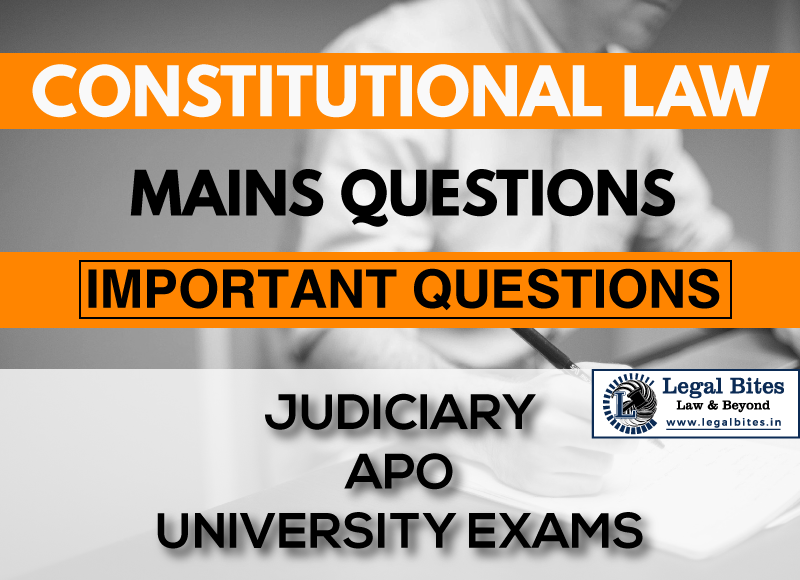Federalism in India: Unitary, Quasi, Cooperative, Competitive
Federalism is a method of segregating powers so that the central and local governments are each within a domain, harmonizing and autonomous. I. Meaning of the word ‘Federal’ and ‘Federalism’ The term “federal” is derived from the Latin foedus, which means, “covenant”. Therefore, the idea of federalism embodies in itself the ideas of promise, obligation, and undertaking; and hence, the federal… Read More »
;
Federalism is a method of segregating powers so that the central and local governments are each within a domain, harmonizing and autonomous. I. Meaning of the word ‘Federal’ and ‘Federalism’ The term “federal” is derived from the Latin foedus, which means, “covenant”. Therefore, the idea of federalism embodies in itself the ideas of promise, obligation, and undertaking; and hence, the federal idea draws on collaboration, reciprocity, and mutuality. Federalism is a method...
Federalism is a method of segregating powers so that the central and local governments are each within a domain, harmonizing and autonomous.
I. Meaning of the word ‘Federal’ and ‘Federalism’
The term “federal” is derived from the Latin foedus, which means, “covenant”. Therefore, the idea of federalism embodies in itself the ideas of promise, obligation, and undertaking; and hence, the federal idea draws on collaboration, reciprocity, and mutuality.
Federalism is a method of segregating powers so that the central and local governments are each within a domain, harmonizing and autonomous. Therefore, federalism provides a constitutional apparatus for bringing unity in diversity by toning the deviating forces in the country for the achieving national targets which are common to the governments at both the central and the local levels.[1]
The classic definition of federalism is the one offered by K.C. Wheare, who described the federal principle as “the method of dividing powers so that the general and regional governments are each within a sphere coordinate and independent.”[2]
A similar definition of federalism was offered by A.V. Dicey, who identified the three leading characteristics of a “completely developed federalism” as including the distribution of powers among governmental bodies (each with limited and coordinate powers), along with the supremacy of the constitution and the authority of the courts as the interpreters of the constitution.[3]
An important feature of federalism is the division of power between the central government and the constituent units under a constitutional scheme that cannot be changed legally by an ordinary method of central legislation. It is also essential that the arrangement assures the ability of the central government to carry out its purposes within the scope of its authority over the whole area.
Hence general characteristics of a federation are:
- Two sets of government constitutionally coordinate
- Division of powers between the centre and units.
- A federal court as a guardian of the constitution.
- Supremacy of the constitution which is rigid.
II. Federalism in India: Quasi-Federal Nature of the Indian State
The Indian constitution contains both features of a federal constitution and unitary constitution. For example, despite it being federal in character, it declares India to be a union of states. Indian federalism has been devised with a strong Centre to prevent as well as ameliorate conflict of interests of the Centre and the States.
According to KC Wheare, in practice, the Constitution of India is quasi-federal in nature and not strictly federal. In words of D.D. Basu, the Constitution of India is neither purely federal nor unitary, but it is a combination of both. Throughout the Constitution, the emphasis is laid on the fact that India is a single united nation. India is described as a Union of States constituted into a sovereign, secular, socialist and democratic republic. The Constitution of India is federal in structure and unitary in spirit i.e. it is quasi-federal in nature.
III. Federal features of the Indian Constitution
The written constitution marks India to be a federal country. The Indian constitution is the lengthiest and the bulkiest constitution in the world which clearly defines everything from rights to remedies. A federal-state derives its existence from the Constitution.[4]
Every type of power; be it legislative, administrative or judicial, irrespective of it being at the centre or the state level is controlled by and subordinated to, the Constitution. This strengthens the federal nature of the country and assures security to the state and citizens. A Federal system cannot exist without a written constitution.
UK does not have a written constitution and so it is not a federal country. The States in a federal setup, come together and enter into a treaty and the terms of the treaty are required to be reduced into writing in the form of a written constitution. The written Constitution rings stability in the overall governance of the country.
If there were no written Constitution defining the scope of the powers of Centre and the States, there will be chaos, misunderstandings and conflicts between the Centre and the States who would seek to cross over each other’s line of authority.
Further, the Indian Constitution is a rigid one which cannot be amended by the national legislature unilaterally without the participation of the states. The federal provisions, i.e. the provisions which deal with the centre-state relations cannot be amended without it being ratified by at least half of the states.
For example, in Kihoto Hollohan v. Zachilhu & Others[5] the court invalidated the insertion of Para 7 in the Xth Schedule by way of 52nd Constitutional Amendment because Para 7 affected the jurisdiction of state high courts and the amendment was passed simply by both the houses of the parliament and was not sent for the approval of the states, so there were procedural ultra vires and the SC declared the 52nd Amendment and the Xth Schedule to be unconstitutional to this extent as void.
The powers of the government have been divided between the Centre and the State by way of the three lists (Union List, State List, and Concurrent List) in Schedule VII of the Constitution. Only the Centre deals with the issues mentioned in the Union List, States on the areas mentioned in the State List while the Concurrent List contains areas where both the Centre and the State can legislate.
An Independent Tribunal which is authorized to resolve disputes between the Centre and the States is an essential feature of federalism. In India, it is the Supreme Court which is the federal tribunal which can resolve all the disputes between the Centre and the States under Article 131.
IV. Unitary, or anti-federal features of the Indian Constitution
There are historical reasons for the centralization and unitary features in the Indian Constitution– when the Constitution was made, it was made at the time of partition of India, so the framers thought that if the Central government was not strong, then India would get fragmented. The constitution of India establishes a dual polity.[6]
Article 1 provides that India i.e. Bharat shall be a Union of States. The word ‘federal’ has not been used anywhere in the Constitution. Article 2 and 3 of the Constitution, give the power to the Parliament to redraw the political map of India; to create and abolish the states, change the boundaries of the States or even change their names and this can be achieved by simple legislation by way of a simple majority in the Parliament and the Constitution only provides for consultation by the Centre of the concerned State.
The provision only provides for consultation of the State Assemblies and not their concurrence. Further, the Constitution of India has established a Single and Uniform Citizenship for the whole of the country. In a federal state like the United States of America there is dual citizenship where a citizen firstly owes allegiance to the States and secondly to the union. But in case of India though it is a Federal State there is single citizenship.
Appointment of the Governors of various States is done by the Centre. Governor is the constitutional head of the State and at the same time he is also the representative of the Centre. Appointment of key positions such as the Chief Election Commissioner, the Comptroller and Auditor General are made by the Union Government and All India Services such as IAS and IPS have been created which are kept under the control of the Union.
The jurisdiction of making laws on different subject matters is divided between the union and the state governments. However, it is important to note here that the residual powers lie in the hands of the central government. Further, the Centre has the power to make laws under the State List under in certain cases.
Under Article 249, if the Rajya Sabha passes a resolution with 2/3rd majority that the Parliament should make law with respect to a particular entry in the State List with respect to a particular State, then the Parliament can make that law and it will remain in force for 1 and 1/2 years i.e. the law will cease to have effect six months after the resolution comes to an end because the resolution remains in force for one year.
The Centre can also make law if there is a request or consent by two or three States and such law can be subsequently adopted by other States as well. When the National Emergency is declared, the Union Parliament gets concurrent legislative power to make certain laws under List-II and if there is a conflict between the two, the central law prevails.
Under Article 356, if the President is satisfied that the government of the State cannot be carried out in accordance with the provisions of the Constitution, the proclamation can be made and once such proclamation is made, the State government can be either dismissed or the Assembly can be kept in suspended animation.
Representation in the Legislature, which is equal in case of a true federation such as United States, is not applicable in case of Indian States. States in India have unequal representation in the Rajya Sabha. Representation of States in Rajya Sabha is not equal. The representation of the States in Rajya Sabha is not equal and depends from State to State, which is regulated by the Centre and is, therefore, a unitary feature.
V. Cooperative Federalism
In Cooperative federalism, the Centre and states share a horizontal relationship, where they “cooperate” in the larger public interest. It is an important tool to enable states’ participation in the formulation and implementation of national policies.
Cooperative federalism creates such a relationship in which the national government has an upper hand in the policies and behaviours of state governments, often through the use of funding in kind or cash, manipulating the policies and norms (Ex – Freight equalization policy, SEZs etc), constructing strategic highways or similar corridors and so on for programs.
For example, if the federal government is interested in ensuring that national highways are well-maintained, they might create grants in aid, a specific kind of grant from the federal government that provides funds for the states to pursue a policy. In this case, the grants in aid would likely be for purchasing necessary constituents or other supplies or might provide funding to pay contractors and road, construction workers.
In order to streamline the development process and enhance the progress of all the regions, cooperation between the Centre and states is of utmost necessity. Such form of cooperative federalism is required more so in case of India, due to its vastness, enormity and extreme diversity. India’s cooperative federalism, however, has been greatly affected by the report of Simon Commission and the resultant Government of India Act, 1935. Indian constitution has heavily drawn its features from this 1935 Act.
The spirit of co-operative federalism in India is observed by following
- Distribution of Powers
- Supremacy of the Constitution
- A Written Constitution
- Rigidity
- Authority of Courts
Under this arrangement in the Constitution, the Centre is more dominant power, as has been explained previously.
Some of the norms under which Cooperative federalism is practiced in India are as follows[7]:
- Article 263 of the Constitution has provided for the setting up of an Inter-State Council for investigation, discussion and recommendation for better coordination of relation between the Centre and the States.
- The Zonal Councils set up under the State Reorganization Act 1956 provide another institutional mechanism for centre-state and inter-state cooperation to resolve the differences and strengthen the framework of cooperation.
- The National Development Council and the National Integration Council are the two other important forums that provide opportunities for discussion to resolve differences of opinion. Central councils have been set up by various ministries to strengthen cooperation.
VI. Competitive Federalism
In Competitive federalism the relationship between the Central and state governments is vertical and between state governments is horizontal. This idea of Competitive federalism gained significance in India post 1990s economic reforms. In a free-market economy, the endowments of states, available resource base and their comparative advantages all foster a spirit of competition.
Increasing globalisation, however, increased the existing inequalities and imbalances between states. In Competitive federalism, States need to compete among themselves and also with the Centre for benefits. States compete with each other to attract funds and investment, which facilitates efficiency in administration and enhances developmental activities.
The investors prefer more developed states for investing their money. Union government devolves funds to the states on the basis of usage of previously allocated funds. Healthy competition strives to improve physical and social infrastructure within the state.
Competitive federalism is not part of the basic structure of the Indian constitution. It is the decision of executives.
Various steps have been taken recently to promote Competitive Federalism. These include the acceptance of the 14th Finance Commission’s recommendations, apart from significantly enhanced devolution which has enabled states to design and implement programmes better suited to their needs, introduction of the GST, and the abolition of the Planning Commission and establishment of the NITI Aayog.
Under the NITI Aayog, the states would not look towards the Centre for policy guidelines and fiscal resources, the share of states in central tax revenue has been increased, the states have the freedom to plan their expenditure based on their own priorities and they will work along with the Centre on a shared vision of national objectives.[8]
However, there are certain disadvantages of competitive federalism as well. Issues such as trust deficit and shrinkage of divisible pools plague Centre-State relations and make total cooperation difficult. This Trust deficit has only been widening, with many states having shown their displeasure with the way the Centre has been dealing with the States. While the Centre has, in theory, increased the States’ share of the divisible pool but, in reality, the States are getting a lesser share.
The allocation towards various social welfare schemes has also come down, affecting the States’ health in turn. The socio-economic parameters and development of each State in India are different and while a few have made substantial progress in terms of employment, literacy and creating a conducive environment for doing business and investments, there are a few which are lagging. There are varied economic patterns in different states. There are deficit states or the backward regions or the states under debt. Those states cannot be treated on par with the well-off states.
Conclusion
There needs to be a mix of competitive and cooperative federalism for India to move ahead. The future for India is cooperative and competitive federalism. Competitive federalism provides the dynamism that needs to be unleashed and cooperative federalism is required to balance competitive federalism.
Cooperative and competitive federalism are not mutually exclusive. They have the same basic principle underlying i.e. development of the nation as a whole, and therefore, can be understood to be two sides of the same coin. Competition alone cannot give the best results; it is competition with the cooperation that will drive the real change.
[1] Federalism, Encyclopaedia Britannica, Available Here
[2] John Law, How can we define Federalism, Perspectives on Federalism, Volume 5, Issue 3, 2013 Available Here
[3] Patrick J. Monahan, Constitutional Law, Part 4, Chapter 2, 1997, Available Here
[4] See Deepshika Gautam, The Nature of Indian Constitution, Times of India, December 31, 2019, Available Here, Anwesa Mohanty, Semi-Federal Structure of the Indian Constitution, Law Times Journal, May 14, 2019, Available Here, and K. Venkataraman, Explained: India’s Asymmetric Federalism, The Hindu, August 11, 2019, Available Here
[5] 1992 SCR (1) 686.
[6] See Saumya Saxena, Nature of Indian Constitution: Federal or Unitary, I Pleaders, May 21, 2019, Available here, Aradhya Sethia, The Indian Constitution’s Unitary Tilt, The Hindu, January 9, 2020, Available here, and Gur Prasad Srivastava, Some Unitary Features of our New Constitution, The Indian Journal of Political Science, Volume 11, Number 4, 1950, Available Here
[7] Cooperative Federalism, Inter-State Council Secretariat, Available Here
[8] Empowering Different States Equally with boost to Federalism, PM India, Available here




